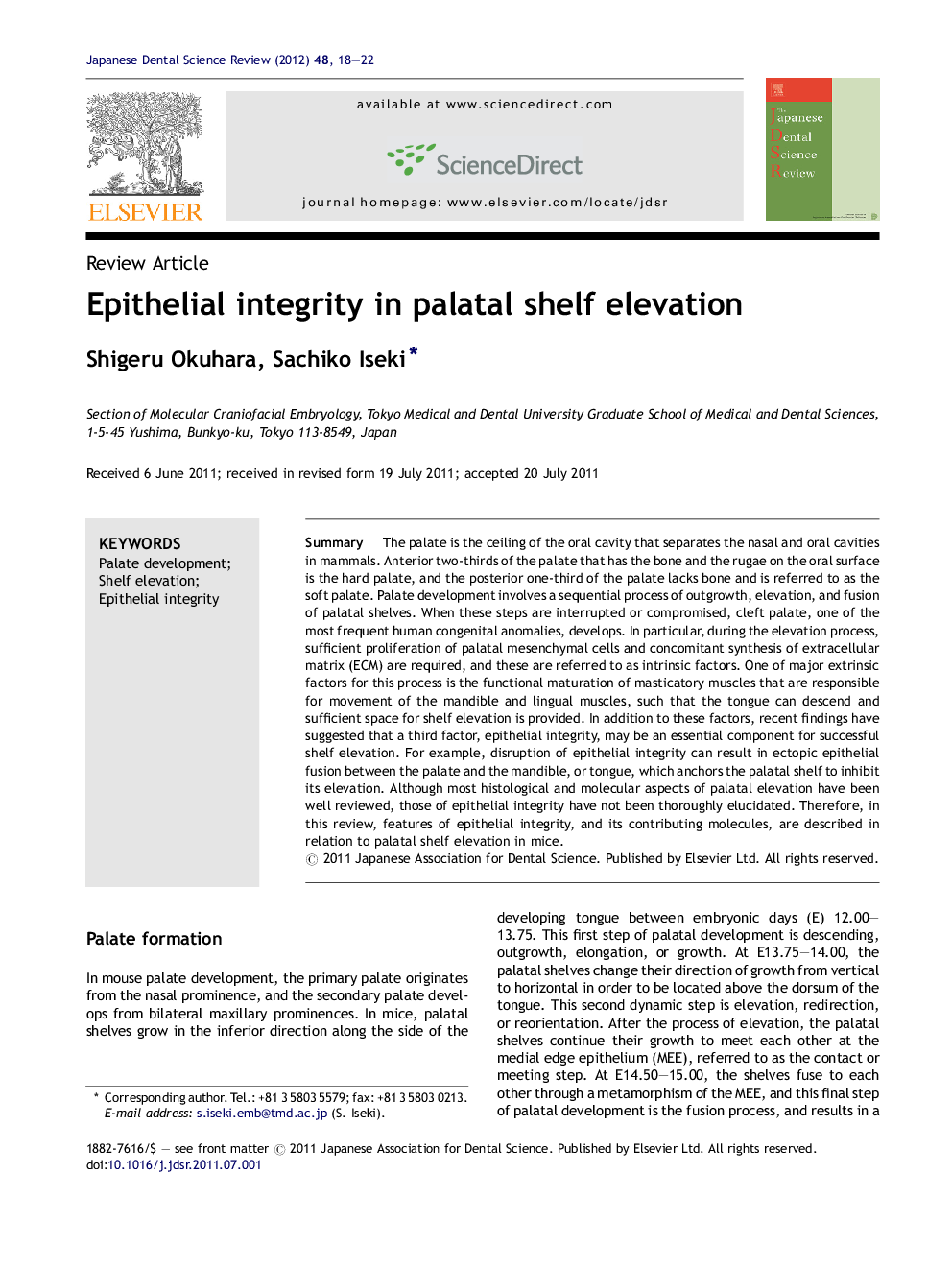| Article ID | Journal | Published Year | Pages | File Type |
|---|---|---|---|---|
| 3136180 | Japanese Dental Science Review | 2012 | 5 Pages |
SummaryThe palate is the ceiling of the oral cavity that separates the nasal and oral cavities in mammals. Anterior two-thirds of the palate that has the bone and the rugae on the oral surface is the hard palate, and the posterior one-third of the palate lacks bone and is referred to as the soft palate. Palate development involves a sequential process of outgrowth, elevation, and fusion of palatal shelves. When these steps are interrupted or compromised, cleft palate, one of the most frequent human congenital anomalies, develops. In particular, during the elevation process, sufficient proliferation of palatal mesenchymal cells and concomitant synthesis of extracellular matrix (ECM) are required, and these are referred to as intrinsic factors. One of major extrinsic factors for this process is the functional maturation of masticatory muscles that are responsible for movement of the mandible and lingual muscles, such that the tongue can descend and sufficient space for shelf elevation is provided. In addition to these factors, recent findings have suggested that a third factor, epithelial integrity, may be an essential component for successful shelf elevation. For example, disruption of epithelial integrity can result in ectopic epithelial fusion between the palate and the mandible, or tongue, which anchors the palatal shelf to inhibit its elevation. Although most histological and molecular aspects of palatal elevation have been well reviewed, those of epithelial integrity have not been thoroughly elucidated. Therefore, in this review, features of epithelial integrity, and its contributing molecules, are described in relation to palatal shelf elevation in mice.
